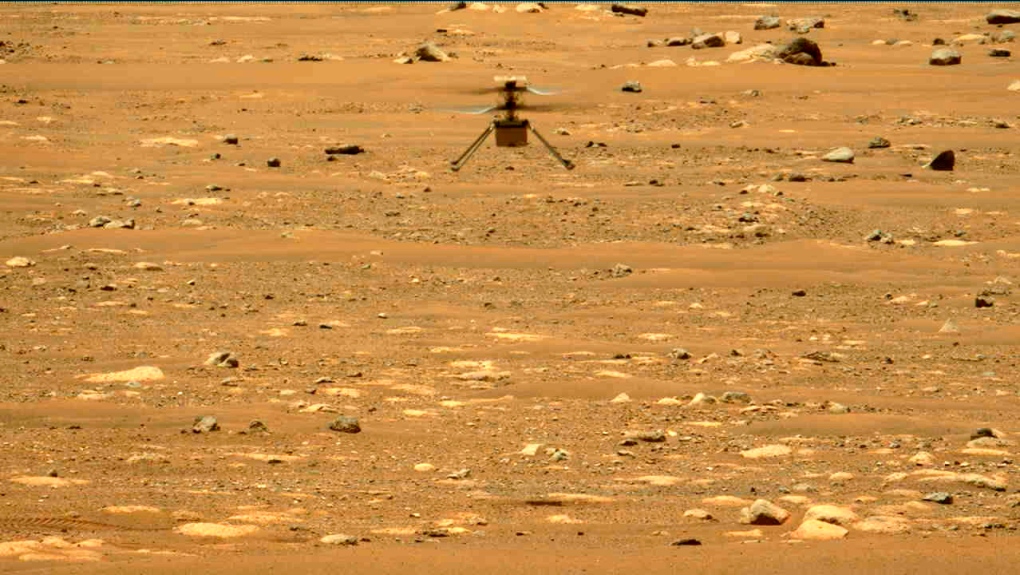A data error in the camera used for navigation put the Mars helicopter in Ingenuity in an uncomfortable situation. That almost went wrong: On its sixth flight, the Mars helicopter Ingenuity got into trouble because of a fault in the navigation system. In the end, however, it landed safely again.
On May 22nd, the 91st Martian day of the Perseverance mission, Ingenuity took off on its sixth flight. The Mars helicopter should rise to a height of 10 meters. Then he was supposed to fly a distance of 215 meters with two changes of direction at a speed of 14.4 km / h: 150 meters to the southwest, 15 meters to the south and finally 50 meters to the northeast.
Initially, the flight went according to plan. But towards the end of the first stage, Ingenuity suddenly behaved strangely: The Mars helicopter changed its speed and then swayed “in an oscillating pattern”, wrote Ingenuity pilot Håvard Grip in the Ingenuity blog entry. This behavior continued for the rest of the flight. At the end of this, however, he landed safely.
Ingenuity navigates with images
According to the National Aeronautics And Space Administration (NASA), the reason for the behavior was a fault in the on-board camera, which together with an inertial measurement unit (IMU) is responsible for navigation. The camera delivers 30 images per second, which are compared with the data from the IMU.
The navigation system’s algorithm first checks the time stamp that it receives with the image. The algorithm then makes a prediction of what the camera should have seen at that particular point in time based on surface features it identified on recently captured images. Finally, the algorithm examines where these features actually appear in the image.
During the flight, however, there was an image jam, so that the algorithm received images with an incorrect time stamp. He therefore calculated alleged corrections based on incorrect information. The resulting inconsistencies have significantly worsened the information that was used to fly the helicopter. As a result, the estimates were constantly being corrected to take account of the phantom errors, wrote Grip.
According to Grip, the fact that the helicopter did not crash and land safely is due to the robustness of some subsystems such as the rotor, the actuators and the power supply. They reacted to the aggravated situation and kept the helicopter in the air. The pilot’s assessment:
“Although the flight revealed a weak point in the timing that must now be rectified, it also confirmed the robustness of the system in several ways.”
